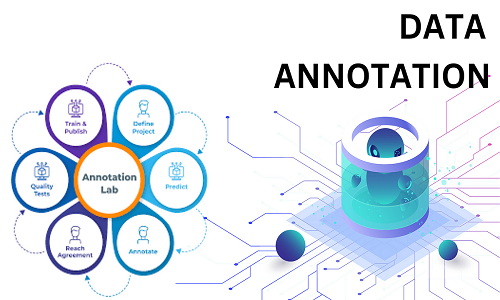
The digital landscape is constantly evolving, pushing the boundaries of how we interact with content online. Among the myriad innovations, annotation tools stand out as a transformative force, redefining our engagement with digital media. As we delve into the future of digital markup, it’s clear that the latest innovations in annotation technology are not just enhancing our current capabilities but also paving the way for entirely new forms of collaboration, learning, and information management. This article explores the cutting-edge developments in the field of annotation tools, highlighting their significance and potential impact on various sectors.
An annotation tool has traditionally been utilized to add notes, comments, or explanations to digital documents, images, and web pages. However, the advent of sophisticated technologies has significantly expanded their functionality and scope. Today, these tools are equipped with features like collaborative annotation, multimedia support, AI-powered insights, and integration with various digital platforms. Such advancements are making annotation tools indispensable for educators, researchers, designers, and businesses alike.
Collaborative Annotation: Revolutionizing Teamwork and Learning
One of the most significant advancements in annotation tool technology is the enhancement of collaborative features. Modern annotation platforms now enable real-time collaboration among users, allowing teams to work together on documents or projects from any location. This not only facilitates seamless communication and feedback but also fosters a more dynamic and interactive learning environment. In educational settings, this translates to more engaging and interactive study sessions, where students can annotate study materials collaboratively, share insights, and engage in discussions directly on the document.
AI-Powered Annotation: Elevating Efficiency and Insight
Artificial Intelligence (AI) is reshaping the capabilities of annotation tools, introducing automation and advanced analytics to the process. AI-powered annotation tools can automatically recognize text, images, and even patterns within data, streamlining the annotation process. This not only saves time but also enhances the accuracy of annotations. Furthermore, AI algorithms can analyze annotated data to provide insights, summaries, and even predict trends. This feature is particularly beneficial for researchers and analysts, enabling them to sift through vast amounts of data efficiently and derive meaningful conclusions.
Multimedia Annotation: Enriching Content Interaction
The scope of annotation has expanded beyond text to include various forms of multimedia, including images, videos, and audio files. Modern annotation tools now support multimedia annotations, allowing users to attach notes, comments, and even additional multimedia elements to specific parts of a video or image. This capability is revolutionizing fields such as digital marketing, design, and education by enabling more nuanced feedback and interaction with multimedia content. For instance, designers can receive precise feedback on specific elements of a visual design, while educators can create interactive learning materials that engage students in a multi-sensory experience.
Integration and Accessibility: Making Annotation Ubiquitous
Another notable trend is the seamless integration of annotation tools with other digital platforms and services. Whether it’s cloud storage services, digital libraries, or content management systems, the ability to annotate directly within these platforms enhances workflow efficiency and ensures that valuable insights and feedback are easily accessible. Furthermore, the focus on accessibility has led to the development of annotation tools that are inclusive, catering to users with disabilities through features like voice annotations and screen reader compatibility.
The Future is Bright and Interactive:
Looking ahead, the future of digital markup through annotation tools is poised for even more groundbreaking innovations. We can anticipate the development of more intuitive, AI-driven interfaces that understand user context and preferences, offering personalized annotation suggestions. Augmented reality (AR) and virtual reality (VR) may also integrate with annotation technologies, enabling users to interact with and annotate 3D models and virtual environments, opening up new possibilities for education, design, and entertainment.
In conclusion, the latest innovations in annotation tool technology are not only enhancing the way we interact with digital content but also reimagining the possibilities for collaboration, learning, and creativity. As these tools continue to evolve, they promise to unlock new dimensions of digital engagement, making information more accessible, interactive, and insightful. The future of digital markup is indeed bright, heralding an era where knowledge sharing and collaboration are boundless, facilitated by the ever-evolving capabilities of annotation tools.

Be the first to comment